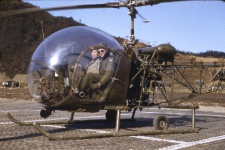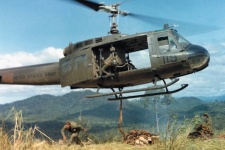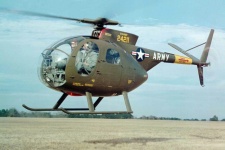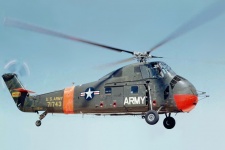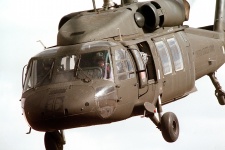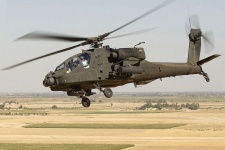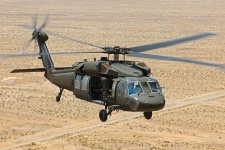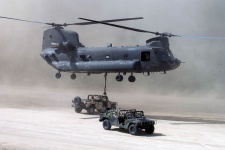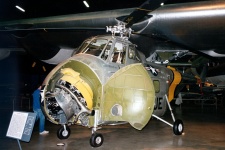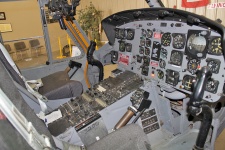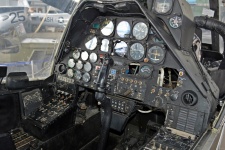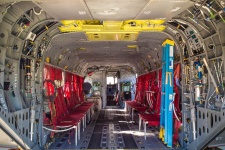Aircraft Colors and Camouflage, US Army Aviation
![]()
Introduction to US color standards
The first color standard in use by the US armed forces was known as Specification No. 3-1, introduced on 28 November 1919 and including a palette of 24 colors of which only one would still be in use during World War II. The earliest standard in use by the US Army Air Corps (USAAC) before the war was Specification 14057 which dated from April 1931 and had been revised numerous times since, the latest being Specification 14057-C on 27 December 1939. An updated eight-color (later nine-color) palette was introduced shortly thereafter, in Air Corps Bulletin No. 41 dated 16 September 1940 and this would include all the main colors in use when the US Army Air Force (USAAF) replaced the USAAC in June 1941. Camouflage schemes would later be specified in the Technical Order No. 07-1-1 although in many cases these were applied in an ad hoc manner by commanders in the field. The US Navy (USN) had its own color system during the early years of World War II based around Bureau of Aeronautics (BuAer) Specification M-485 from 6 December 1940 which listed 6 (later 7) basic non-spectacular (matt) colors.
The need to unify color codes for the USAAF and USN (which used completely different camouflage schemes) resulted in the Army and Navy Aircraft (ANA) system, introduced on 28 September 1943. ANA Bulletin No. 157 included an initial palette of 19 mostly matt (plus a few semi-gloss) colors using a three-digit numbering system in the 600s. ANA Bulletin No. 166 added a further 15 gloss colors numbered in the 500s. A number of additional colors were later added for a total of 44. Notably, a few of these were gloss colors but were added to the 600s range. The ANA system also included numerous substitute colors for British colors, necessary in light of the large number of US aircraft provided to the Royal Air Force and Fleet Air Arm through Lend-Lease.
On 12 January 1950, the US published Federal Specification TT-C-595 which superseded the ANA system with a four-digit numbering system. This was short-lived and just a few years later was superseded by the Federal Standard system, formally known as FED-STD-595. Each color the palette is identified by a five-digit code. The first digit refers to the sheen of the paint, these being gloss (1), semi-gloss (2), and matt (3). The second digit refers to the color, these being brown (1), red (2), yellow (3), green (4), blue (5), gray (6), all others including whites, blacks, and metallics (7), and fluorescents (8). The last three digits are unique for each color and typically go from darker to lighter. The initial palette included 358 colors although some colors only officially exist in one or two out of the three sheens. Although the hues are identical regardless of sheen, there have been some notorious exceptions such as Olive Drab whose semi-gloss version used by the US Army on tanks (FS 24087) was different from the matt version used on helicopters (FS 34087), this being an error that took decades to correct.
The Federal Standard system has gone through numerous revisions, starting with FED-STD-595A in January 1968 (437 colors), FED-STD-595B in January 1994 (611 colors), and FED-STD-595C in January 2008 (650 colors). The ANA Bulletin 157/166 continued to be updated post-war as well, until 15 October 1964 when it was discontinued in favor of FED-STD-595. On February 17th, 2017, the Federal Standard system was replaced by the Aerospace Material Specification Standard 595, or AMS-STD-595. It is largely equivalent to the Federal Standard system and most existing colors have been carried over with identical numbers.
Contents:
- Post-war / Korean War / Vietnam War (1947-1985)
- Helo Drab scheme (1985-Current)
- Gulf War schemes (1991)
- Woodland Sage scheme (1995-2000s)
- Interiors
- Color Tables
External Links:
- Federal Specification TT-C-595
- The History of Federal Standard 595
- Federal Standard 595C Range Colour Chart
- AMS Standard 595A Range Colour Chart
- AMS Standard 595 Color
Paint guide basics:
All colors in this page include a paint chart with matches or equivalences from 19 different model paint ranges. Paints are considered matches if they are labeled with the intended color (either uniquely on together with another color). Paints are considered equivalences if they are close to the intended color but not labeled as such. The accuracy of any paint is independent of whether it is a match or an equivalence and these are described in the text (there can be poor matches and highly accurate equivalences). The following nomenclature is used in the paint tables and is based on matches or equivalences to US Insignia Red FS 11136:
| Paint | Match or equivalence type (label) |
| MP01 | Labeled to match one specific color (FS 11136) |
| MP02* | Labeled to match more than one color of same-country standards (FS 11136 / ANA 509)* |
| MP03** | Labeled to match more than one color of different-country standards (FS 11136 / BS 538) |
| MP04 (!) | Questionable accuracy of label match (doesn't look like FS 11136) |
| MP05 (?) | Questionable accuracy of label match, untested (doesn't look like FS 11136 in the bottle) |
| (MP06) | Close equivalent to FS 11136 (BS 538) |
| (MP07) (?) | Questionable equivalent to FS 11136 (Generic Gloss Red) |
* A single asterisk also denotes implicit matches for same-country standards where there is an official succession between standards. For example, H327* would match ANA 509 even if the label only references FS 11136 since ANA 509 is its official predecessor. This does not apply when there are considerable differences between successive paints (ex: Olive Drab No. 41/ANA 613/FS 34087) and this will be described in the text. By and large, however, single asterisk matches should be considered close enough to unique matches as to not be seriously questioned.
The paint charts make no distinction between gloss, semi-gloss, and matt variants of a color if the correct sheen is unavailable (ex: gloss FS 11136 will be a specific match for matt FS 31136 if the latter does not exist in the same paint range). Exceptions are made where there is a known or suspected color difference (ex: FS 24087 and 34087).
![]()
Post-war / Korean War / Vietnam War schemes (1945-1985)
US Army helicopters, like vehicles, were painted in in the ubiquitous Olive Drab. As mentioned in the introduction, there is a huge degree of confusion over the post-war shade of Olive Drab, whose predecessor was the wartime ANA 613 and (from January 1950) or the identical FS 3412 from the short-lived TT-C-595 standard. However, the introduction of Olive Drab FS 34087 on 15 October 1964 (ANA Bulletin 157e and later added to FED-STD-595A on 2 January 1968) resulted in a color that was visibly different to the colors that it superseded. It is broadly agreed that FS 34087 was a brown, although there are differing views on whether it was darker or lighter than ANA 613 (Hex translations of their respective values suggest it is darker, but only a comparison of color chips can give a conclusive answer). Furthermore, it was also browner than its semi-gloss version used on US Army vehicles, FS 24087. This was the result of an administrative mistake given that, in theory, Federal Standard colors with different first digit should vary only in their sheen. Eventually the error was picked up (decades later) and FS 34087 was eliminated completely from the FS palette, the shade being redesignated FS 34088 in FED-STD-595B. At the same time, FS 24087 was redesignated FS 24086 while FS 14087 became FS 14086.
The overall Olive Drab scheme was only interrupted by occasional anti-glare panels in Black FS 37038 as well as identifications bands (typically in the tail boom) in Insignia Yellow FS 13538. Aircraft on training duties would also have sections painted in International Orange FS 12197.
Paint guide:
- Olive Drab FS 34087: Any post-1956 US Army helicopter should not be particularly difficult to build given that FS 34087 is very widely available, and most paint ranges have various Olive Drab shades of which at least one covers the post-war version. However, generic Olive Drab shades like Tamiya (XF-62) and Humbrol (66 and 155) typically cover wartime shades and are therefore inaccurate for a post-war helicopter.
Links:
- Olive drab - and some confusion (Britmodeller)
| ANA 613 | |||||
| (FS 33077) | FS 34087 | FS 13538 | FS 12197 | FS 37038 | |
| Olive Drab | Olive Drab | Insignia Yellow | International Orange | Black | |
| Schemes | |||||
| General (1945) | Overall | (ID bands) | (ID bands) | (Anti-glare) | |
| General (1964) | Overall | (ID bands) | (ID bands) | (Anti-glare) | |
| Color matches | |||||
| Gunze Aqueous | H52 | H304 | H329 | - | H12 |
| Gunze Mr. Color | C12 | C304 | C329 | - | C33 |
| Humbrol | (155) | - | 154 | - | 33 |
| Model Master | 2050 | 1711 | 1707 | 2022 | 1749 |
| Revell | - | - | - | - | 04 |
| Tamiya | - | - | - | - | XF-1 |
| Vallejo Model Air | 71.016* | 71.043 | 71.078** | - | 71.057 |
| Vallejo Model Color | 70.887* | - | - | - | 70.950 |
| AKAN | 72033 | 72029 | 72001 | - | 78005 |
| AK Interactive | AK 2204 | AK 4213 | - | - | AK 735 |
| AK Real Colors | - | RC026 | - | - | RC001 |
| AMMO by Mig | A.MIG-240* | - | - | - | A.MIG-046 |
| Colourcoats | ACUS12 | - | - | ACUS46 | C02 |
| Hataka | HTK-_018 | HTK-065 | HTK-066 | HTK-066* | HTK-041 |
| Lifecolor | - | UA 523 | UA 140** | - | LC 02 |
| Mission Models | - | MMP-025 | - | - | MMP-047 |
| Mr. Paint | MRP-138 | MRP-234 | - | MRP-232** | MRP-171 |
| Xtracolor | X113 | X111 | X106 | - | X012 |
| Xtracrylix | XA1113 | - | - | - | XA1012 |
Helo Drab scheme (1985-Current)
In the early 1970s, the US Army began experimenting with infra-red reflective and chemical agent resistance coats (CARC) for its vehicles and helicopters, with the first specification appearing in 1974 (MIL-C-46168). This would eventually specify numerous CARC paints and assign them FS values even though they were intended to match laboratory samples rather than FS color chips. In 1983 it was determined that all US Army tactical vehicles (including helicopters) would be given CARC coats by Fiscal Year 1985 and this was later formalized on helicopters on 12 June 1986 (TM 55-100-345-23) with Aircraft Green FS 34031. This would later be better known as US Army Helo Drab due to its exclusive use on US Army helicopters. This is a confusing color as it can change shade in different lighting conditions, looking either as a very dark green, khaki, or gray. US Helo Drab has since been the standard color seen in all US Army helicopters, notably those that were introduced in the 1980s like the AH-64 and UH-60 which have worn this color throughout much of their service lives. An exception to this color is the CH-47 which is described below.
Despite its formal introduction in 1985-86, its use on operational US Army aircraft long preceded this, with experimental use of dark drab CARC paints appearing from the late 1970s, at least one specification from 10 August 1978 (TB 746-93-2) already allowing non-standard, low IR reflective paint schemes. Virtually all UH-60s since their introduction in 1979 have shown much darker drab colors relative to Olive Drab, which would be indicative of experimental CARC colors including the color that would eventually be matched to FS 34031.
Paint guide:
- US Army Helo Drab FS 34031: Helicopter colors don't get much love among paint manufacturers, and US Helo Drab is not an exception: aside from Model Master, it has not been covered by the traditional manufacturers although Tamiya's Khaki Drab XF-51 is not too far off the mark. The newer ranges have been more favorable although even so, far from universal. Mr. Paint seems to have gotten it right, with AK Real Color being being a bit too much on the green side of things.
Links:
- Introduction of CARC Paint - 1976? (ARC Discussion Forums)
| FS 34031 | |
| US Army Helo Drab | |
| Schemes | |
| Basic | Overall |
| Color matches | |
| Gunze Aqueous | - |
| Gunze Mr. Color | - |
| Humbrol | - |
| Model Master | 2024 |
| Revell | - |
| Tamiya | (XF-51) |
| Vallejo Model Air | - |
| Vallejo Model Color | - |
| AKAN | - |
| AK Interactive | - |
| AK Real Colors | RC229 |
| AMMO by Mig | - |
| Colourcoats | ACUS25 |
| Hataka | HTK-067 |
| Lifecolor | - |
| Mission Models | - |
| Mr. Paint | MRP-174 |
| Xtracolor | X153 |
| Xtracrylix | - |
Gulf War schemes (1991)
Like the USMC, the US Army also devised ad hoc camouflage schemes for the 1991 Gulf War, although with less variation that its Marine counterparts. The desert color used is US Army Sand FS 30277, which is slightly darker and with an olive tint compared to US Marine Sand FS 33711 which was used on USMC helicopters. Most of the time, the entire aircraft was painted sand although in many cases, there remained pieces (like troop compartment doors) that retained their original US Army Helo Drab. Nevertheless, there is confusion over whether this is the correct sand shade, with other possibilities being Dark Sand FS 33303 (used on the A-10 experimental 'Peanut' scheme) or CARC Tan FS 33446 (the basic desert color of US Army/USMC tanks). The three colors, in combat conditions, would probably be difficult to distinguish, with Dark Sand having an olive tint, and CARC Tan slightly more beige. There is noticeable variation in the colors seen on photographs.
Paint guide:
- US Army Sand FS 30277: US Army Sand relatively well represented, though none of the traditional paint ranges have it in acrylic. It is not always known as 'US Army Sand' but as long as the FS number matches, it should be good.
- Dark Sand FS 33303: For those inclined to use Dark Sand, this is one of the most difficult paints to find: only Vallejo Model Color has it in its range. A close approximation would be the Dunkelgelb RAL 7028 light base used in some modulation sets (these are included in the paint chart in parenthesis).
- CARC Tan FS 33446: CARC Tan is relatively well available among the newer paint ranges but is often known as 'US Armor Sand' or 'US Desert Sand'. There is frequent confusion regarding the correct shade of US Army tanks, as it later changed to FS 33531 in the 2000s. However, the color in use during the 1991 Gulf War is FS 33446.
Links:
| FS 30277 | FS 33303 | FS 33446 | |
| US Army Sand | Dark Sand | CARC Tan | |
| Schemes | |||
| Basic | Overall | ||
| Alternative (?) | (Overall) | (Overall) | |
| Color matches | |||
| Gunze Aqueous | - | - | - |
| Gunze Mr. Color | - | (CMC04) | - |
| Humbrol | 187 | - | - |
| Model Master | 1704 | - | 2136 |
| Revell | - | - | - |
| Tamiya | - | - | - |
| Vallejo Model Air | 71.138 | - | 71.122 |
| Vallejo Model Color | 70.988 | 70.821 | - |
| AKAN | 72024 | - | - |
| AK Interactive | - | (AK 007) | AK 122 |
| AK Real Colors | RC084 | - | RC079 |
| AMMO by Mig | - | (A.MIG-903) | A.MIG-025 |
| Colourcoats | ARUS06 | ARUS01 | |
| Hataka | HTK-210 | - | - |
| Lifecolor | UA 019 | (UA 249) | - |
| Mission Models | MMP-086 | - | MMP-038 |
| Mr. Paint | - | - | MRP-80 |
| Xtracolor | - | - | - |
| Xtracrylix | - | - | - |
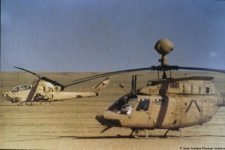 |
Gulf War US Army Sand was likely mixed in theater and may have resulted in different shades like this AH-1 and OH-58 from different units show. |
Woodland Desert Sage scheme (2009-Current)
To date, all US Army helicopters use US Army Helo Drab with the notable exception of the CH-47F transport. In 2009, a US Army study concluded that a new paint was needed which would provide ideal camouflage properties in a single color for operations in various environments. The color chosen was a chemical agent resistant coat (CARC) version of FS 34201 which became known as Woodland Desert Sage. This FS color matches that used by the USAF for its SIOP scheme used on SAC bombers during the 1970s and 80s and which is generally referred to as SAC Bomber Tan. Woodland Desert Sage varies considerably in tone depending on lighting but is best described as a somewhat olive tan or khaki that can lean towards green or yellow in different photos.
Paint guide:
- Woodland Desert Sage FS 34201: For modeling purposes Woodland Desert Sage is identical to SAC Bomber Tan which is what FS 34201 is usually referred to. It is not the most widely available color given that it was only used in the SAC SIOP scheme.
Links:
| FS 34201 | |
| Woodland Desert Sage | |
| Schemes | |
| Basic | Overall |
| Color matches | |
| Gunze Aqueous | - |
| Gunze Mr. Color | - |
| Humbrol | - |
| Model Master | 1792 |
| Revell | - |
| Tamiya | (XF-49) (?) |
| Vallejo Model Air | 71.023* |
| Vallejo Model Color | - |
| AKAN | 62047 |
| AK Interactive | - |
| AK Real Colors | - |
| AMMO by Mig | - |
| Colourcoats | - |
| Hataka | HTK-069 |
| Lifecolor | UA 039 |
| Mission Models | MMP-097 |
| Mr. Paint | - |
| Xtracolor | X119 |
| Xtracrylix | - |
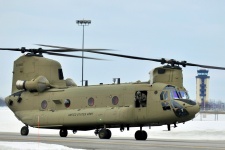 |
This photo shows Woodland Desert Sage closest to its actual FS color match. |
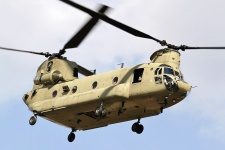 |
In different lighting conditions it can look greener or, as in this case, more sand-like. |
Interiors
All US helicopters have had the same interior colors during the post-war period. From the mid-1950s, cockpits were painted Dark Gull Gray FS 36321 as were interiors like troop compartments, although items such as seats as well as the floor and ceilings could be other colors. However, the requirement for night goggle compatibility from the 1970s has resulted in cockpits being painted Black FS 37038. This has since been the standard cockpit color of all helicopters, with troop compartments remaining FS 36231.
Paint Guide:
- Dark Gull Gray FS 36231: This is widely available and should not present much problem, with most ranges matching the post-war version rather than the wartime ANA 621 that preceded it although the differences between the two are negligible. Tamiya's XF-54 is a very close equivalent as well. AKAN only has the post-war version it in its lacquer range, although ANA 621 is available in acrylic.
| FS 36231 | FS 37038 | |
| Dark Gull Gray | Black | |
| Schemes | ||
| General (1955) | Cockpit / Troop area | |
| General | Troop area | Cockpit |
| Color matches | ||
| Gunze Aqueous | H317 | H12 |
| Gunze Mr. Color | C317 | C33 |
| Humbrol | 140 | 33 |
| Model Master | 1740 | 1749 |
| Revell | - | 04 |
| Tamiya | (XF-54) | XF-1 |
| Vallejo Model Air | 71.277* | 71.057 |
| Vallejo Model Color | 70.991 | 70.950 |
| AKAN | 72064* / 62009 | 78005 |
| AK Interactive | - | AK 735 |
| AK Real Colors | RC247 | RC001 |
| AMMO by Mig | A.MIG-205 | A.MIG-046 |
| Hataka | HTK-044* | HTK-041 |
| Lifecolor | UA 033 | LC 02 |
| Mission Models | MMP-064 | MMP-047 |
| Mr. Paint | MRP-100 | MRP-171 |
| Xtracolor | X131 | X012 |
| Xtracrylix | XA1131 | XA1012 |
Paint Charts
| ANA | ||||
| FS 12197 | International Orange | ID marks | ANA 506 | |
| FS 13538 | Insignia Yellow | ID marks | ANA 508 | |
| FS 30277 | US Army Sand | Camo (Gulf War) | - | |
| FS 33303 | Dark Sand | Camo (Gulf War ?) | - | |
| FS 33446 | CARC Tan | Camo (Gulf War ?) | - | |
| FS 34031 | US Army Helo Drab | Camo (Current) | - | |
| FS 34087 | Olive Drab | Camo (post-1956) | ANA 613 (!) | |
| FS 34151 | Interior Green | Interiors (pre-1953) | ANA 611 | |
| FS 34201 | Woodland Desert Sage | Camo (CH-47F) | - | |
| FS 36231 | Dark Gull Gray | Interiors (post-1953) | ANA 621 | |
| FS 37038 | Black | Cockpits (current) | ANA 604 | |
